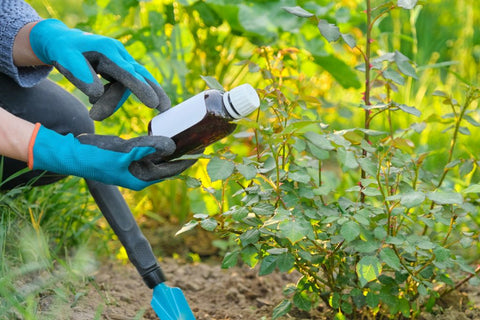Greenhouse farming has gained immense popularity in recent years due to its ability to extend the growing season, protect crops from adverse weather conditions, and provide controlled environments for optimal plant growth. One of the critical factors that contribute to the success of greenhouse farming is climate control. In this comprehensive blog post, we will delve into the importance of greenhouse climate control and explore various strategies and technologies used to optimize growth conditions for plants within these enclosed structures.The following content also has some reference value for raised garden beds.
Understanding the Need for Greenhouse Climate Control
Greenhouse climate control is the practice of regulating temperature, humidity, light, and other environmental variables to create a stable and favorable environment for plant growth. Unlike traditional outdoor farming, greenhouse growers have the advantage of manipulating these factors to meet the specific requirements of their crops. Here's why climate control is essential:
- Temperature Regulation
- Maintaining the ideal temperature range for specific crops promotes photosynthesis and growth. Different plants have different temperature preferences, and greenhouses allow growers to cater to those needs.
- Humidity Management
- Controlling humidity levels helps prevent mold and fungal diseases while ensuring that plants can transpire effectively. Balanced humidity is especially crucial during the seedling and flowering stages.
- Light Intensity and Duration
- Greenhouses enable growers to optimize light conditions by using shading systems, supplemental lighting, and light-diffusing materials. This is vital for year-round cultivation and can boost crop yields.
- Pest and Disease Control
- Closed environments make it easier to implement integrated pest management (IPM) strategies, reducing the need for chemical pesticides and promoting healthier crops.
- Water Efficiency
- Greenhouses allow for precise irrigation systems that deliver water directly to the root zone, minimizing waste and conserving this precious resource.
 Optimizing Temperature Control
Optimizing Temperature Control
Temperature control is fundamental in greenhouse climate management. Various techniques and technologies are employed to maintain the ideal temperature range for different crops:
- Heating Systems:
- Greenhouses in colder climates often use heating systems, such as gas or electric heaters, to provide consistent warmth during cold periods.
- Ventilation:
- Proper ventilation is crucial for temperature control. Automatic vents and fans help regulate temperatures by expelling hot air and bringing in fresh, cooler air.
- Thermal Curtains:
- Thermal curtains can be deployed at night to insulate the greenhouse, preventing heat loss and maintaining stable nighttime temperatures.
- Shade Nets:
- In hot climates, shade nets can be used to reduce excessive sunlight and heat, preventing damage to sensitive crops.
Humidity Control Strategies
Maintaining the right humidity levels is essential for plant health and productivity. Here are some methods used to manage humidity in greenhouses:
- Evaporative Cooling:
- Evaporative cooling systems use water to lower the temperature inside the greenhouse while increasing humidity. This is particularly useful in hot, arid regions.
- Dehumidifiers:
- Dehumidifiers are employed to remove excess moisture from the air, preventing mold growth and diseases.
- Ventilation:
- Proper ventilation not only regulates temperature but also helps control humidity by allowing moisture to escape when necessary.
- Fogging Systems:
- Fogging systems release a fine mist into the air to raise humidity levels during dry periods.
Optimizing Light Conditions
Light is the primary source of energy for plants. Greenhouse growers employ various methods to ensure plants receive the right amount and quality of light:
- Natural Sunlight:
- Greenhouses are designed with transparent or semi-transparent walls and roofs to maximize natural sunlight exposure.
- Supplemental Lighting:
- In regions with limited sunlight, growers use supplemental lighting, such as high-pressure sodium (HPS) or light-emitting diode (LED) lights, to provide additional illumination.
- Light-Blocking Curtains:
- Light-blocking curtains are used to reduce light intensity during periods of excessive sunlight, preventing sunburn and heat stress in plants.
- Light-Diffusing Materials:
-
Materials like shade cloth or light-diffusing films distribute light more evenly throughout the greenhouse, reducing hotspots and promoting uniform growth.

Pest and Disease Management
Greenhouses provide an advantage in pest and disease management through integrated pest management (IPM) strategies:
- Biological Control:
- Beneficial insects, such as ladybugs and predatory mites, are introduced to combat pest populations naturally.
- Monitoring Systems:
- Automated monitoring systems, including traps and sensors, help detect pests and diseases early, allowing for timely intervention.
- Quarantine Areas:
- Some greenhouses have quarantine areas to isolate new plants or those with suspected diseases to prevent their spread.
- Sanitation:
- Maintaining cleanliness within the greenhouse and using disease-resistant plant varieties can help prevent outbreaks.
Water Efficiency and Irrigation
Water is a precious resource, and efficient irrigation methods are crucial in greenhouse farming:
- Drip Irrigation:
- Drip irrigation delivers water directly to the root zone, minimizing wastage and ensuring plants receive adequate moisture.
- Soil Moisture Sensors:
- These sensors help optimize irrigation by providing real-time data on soil moisture levels, allowing for precise watering schedules.
- Recycling and Collection:
- Many greenhouses collect and recycle water runoff, reducing water usage and environmental impact.
- Water-Saving Technologies:
- Innovations like fogponics and aeroponics use minimal water and provide optimal moisture conditions for plants.
Conclusion
Greenhouse climate control is a complex and dynamic field that combines science and technology to create the perfect environment for plant growth. As the demand for fresh, locally grown produce continues to rise, the importance of mastering greenhouse climate control cannot be overstated. Growers who can harness the power of temperature regulation, humidity management, light optimization, pest and disease control, and efficient irrigation will not only increase their yields but also contribute to sustainable and environmentally responsible agriculture. With ongoing research and innovation, the future of greenhouse farming holds even more exciting possibilities for optimizing growth conditions and meeting the world's growing food needs.









